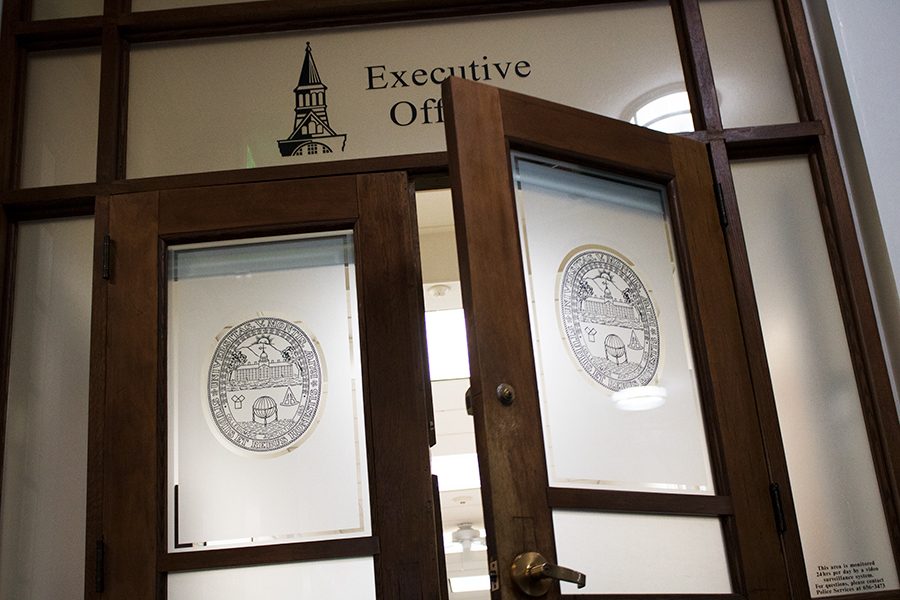Search for a new University president nears its end
January 26, 2019
As the board of trustees prepares to select the next University president, public meetings will be held in February for the UVM community to weigh in.
David Daigle, chair of the board of trustees and co-chair of the presidential search committee, announced the meetings in an email to the University Jan. 15, five months after President Tom Sullivan announced his plans to leave the University at the end of the academic year.
After narrowing the original pool of 90 and conducting interviews in December, the presidential search committee will hold public meetings in February before submitting their final, unranked list to the larger board of trustees, Daigle said.
“Our hope and expectation is that this can be wrapped up in the coming weeks,” he said.
The leadership profile, which is the criteria by which the committee judges candidates, was formed using the Common Ground, priorities committee members have for a new president and input from a broad range of community members, Daigle said.
This set of criteria includes engagement in diversity and inclusive practices, immersion in the community’s culture, improving the University’s reputation and garnering philanthropic support.
SGA submitted feedback to the committee during its comment period, which was used to help the committee shape its priorities in looking for a new president, said Gillian Natanagara, senior and SGA Vice President.
Her priorities for a new president include increased state funding, better retention of UVM graduates in Vermont, continued educational opportunities outside of the classroom, diversity and community building, Natanagara said.
“The University has an opportunity in the near future to affirm its commitment of becoming a more inclusive institution, providing greater support for retaining students and faculty of color and to develop its diversity fellows program,” she said.
Natanagara said affordability and open lines of communication with the student body were what students have expressed to her as their top priorities, referencing the February 2018 on-campus protests by NoNames for Justice over racially charged incidents.
“If you create lines of communication that are less vertical and more horizontal between administration and students, that will be a better way to make progress,” she said.
United Academics President Sarah Alexander, an associate English professor, said UA wants a president who values diversity and academics, who does not raise tuition and cares about the liberal arts.
She also said she wants a president who will prevent a raise in tuition by containing the size of the administration and not entering into what she described as an amenities race rather than by cutting faculty, classes or other academic offerings.
The amenities race refers to universities investing more in construction and branding than academics, Alexander said.
While she acknowledges the importance of those endeavors, Alexander wants to see more money spent on academics and students, citing the approximately $1.6 million spent a few years ago on a branding consultant, she said.
“We have to have Arabic classes more than we need banners that say doing things with purpose, or whatever that slogan they came up with for $1.6 million,” Alexander said. “So we just want a president who will reconsider the priorities.”








joelle f normandinj • Feb 3, 2019 at 9:01 pm
As a parent who pays for two out of state students to attend UVM I was shocked to see the foreign language and classics department gutted by budget cuts after a successful fundraising campaign. UVM attracts out of state students because it is a university that offers a full range of classes. If people wanted a limited education they would go to their local community college. We choose UVM for its range of knowledge, We pay a high price for that opportunity. Please choose a new president who truly values a liberal arts education. Technology is wonderful, but not at the expense of the other departments on campus.
Theodore Cohen • Jan 27, 2019 at 3:30 pm
No one wants the budget cut to reduce tuition?